#ca. 8th century B.C.
Explore tagged Tumblr posts
Text
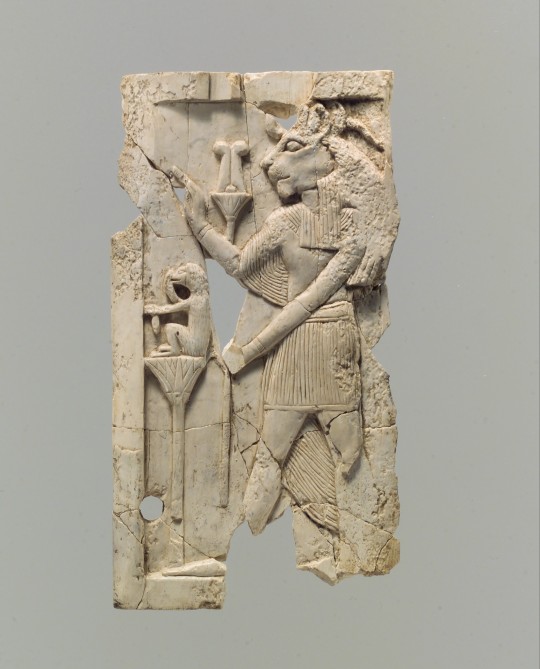
~ Furniture plaque carved in relief with lion-headed figure.
Period: Neo-Assyrian
Date: ca. 8th–7th century BC.
Place of origin: Mesopotamia, Nimrud (ancient Kalhu)
Culture: Assyrian
Medium: Ivory
#ancient#ancient art#history#museum#archeology#ancient sculpture#ancient history#archaeology#mesopotamia#Assyria#neo Assyria#assyrian#nimrud#kalhu#lion#plaque#furniture plaque#ca. 8th century B.C.#ca. 7th century B.C.
962 notes
·
View notes
Text
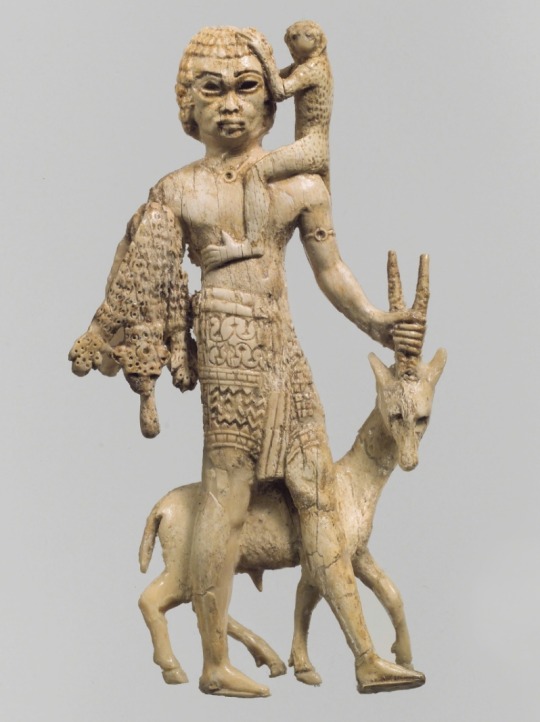
Unknown Assyrian
Statuette of a man with an oryx, a monkey, and a leopard skin, ca. 8th century B.C., Mesopotamia, Nimrud (ancient Kalhu)
Ivory
395 notes
·
View notes
Note
in the bronze age were there more dresses that women wore? i know the well-known minoan dress, but was there another? asking bc I was reflecting on how achilles would be able to hide as a woman if we consider the dress to be historically accurate from the bronze age, as it shows too much of the neck and chest for it to be practical to a man pretend to be a woman. the representations of him hiding are always wearing peplos, which really makes it easier since it covers the region and is even looser, but did peplos already exist in the bronze age?
i was unsure if: a) there was another model of dress that made the disguise easier b) creative freedom of the myth in considering that no one noticed that achilles had no breasts and he had an adam's apple c) this myth emerged/became popular at a time when the models were already different, so although the story theoretically takes place in the bronze age, the popular imagination was with dress models that were not from that time. i.e a kind of natural anachronism, which is not an impossibility since the Iliad itself does this here and there
That's a good question and you don't know how many weeks I have pondered the answer to this 😂😂😂 Since the art we have from the 8th century BCE is mostly stick figures, I tried to find the next oldest and closest to the war depictions of men and women. (6th century BCE)
But first, a 8th century b.C. Boeotian amphora, from Thebes, which probably depicts a nature goddess. Artwork-location: Athens, National Archaeological Museum. (I have to celebrate my accomplishment of finding a full figure!!)

Ok, now some 6th BCE century ones:
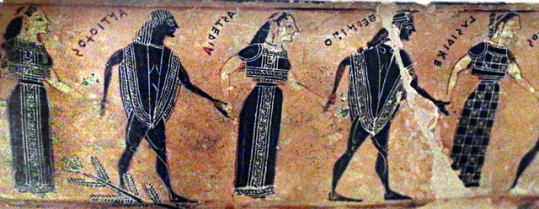
Attic Black-Figure Volute-Krater, known as the François vase, ca. 570-565 BCE signed by the potter Ergotimos and the painter Kleitias depicting young men and women holding hands and dancing in a line.

Attic Black-Figure Hydria, ca. 510-500 BCE depicting women filling jugs at the public water fountain.

Attic Black-Figure Neck Amphora by Swing Painter c. 540-530 BCE depicting the legendary “Judgement of Paris.”
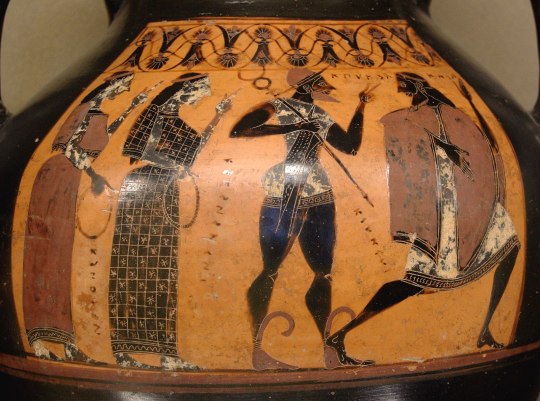
Judgement of Paris, from the Louvre, 560-550 BCE
Also based on the 8th century BCE stick figures, looks like generally dressing for men and women was different at the time. There are some choices for wider clothing, but there's also the matter of the Adam's apple.
I got a possible answer, from another amphora depicting Achilles:

Thetis brings grieving Achilles his new weapons. Side A of an Attic red-figure volute-krater, ca. 460 BC.
There's always the option of a wide cloak which covers your Adam's apple, too! While this amphora is latter, and the cloak is for mourning, there's the option of the complete cover. I haven't found it so far in 8th c. BCE depictions but... why not. Our ancients did nothing else but drape fabrics.
If the part with Achilles disguising as a woman is latter, the anachromism would be the Greek women veiling in later eras makes it easier for him to cloak himself completely.
If somoene knows more, please add it to reblogs :)
#I knwo this took forever but I just coulndt think#this was a good ask anon xD#με παιδεψε κανονικα!#answered
40 notes
·
View notes
Text

A Villanovan bronze cheek-piece, earliest phase of the Etruscan civilization ca. 8th century B.C.
via saintartemis.tumblr.com
28 notes
·
View notes
Text

The ghostly profiles of ancient gods emerge from a ca. 3,000-year-old rock carving in Turkey. Police tracked looters to the subterranean complex, likely built during a time when the Assyrian Empire was expanding in the region in the 8th century B.C. Photograph By Y. Koyuncu and M. Önal , Aantiquity Publications Ltd
Secret Tunnel Reveals Procession of Ancient Gods
Assyrian Deities of Thunder and the Moon were Revealed by Archaeologists in an Underground Chamber Originally Discovered by Looters.
— By Tom Metcalfe | May 10, 2022

The Divine Procession ls led by Hadad, Mesopotamian God of Storms (Far Right, Clutching a Trio of Lightning Bolts); the Moon God Sîn; the Sun God Šamaš; and Atargatis, the Region’s Goddess of Fertility, all Identified using local Aramaic Inscriptions. Photograph and Drawing By M. Önal, Based On Laser Scan By Cevher Mimarlik, Aantiquity Publications Ltd
Archaeologists have discovered rare ancient carvings of Assyrian gods in an underground complex in southeastern Turkey—an unprecedented find that may point to the use of “soft politics” in a frontier region of the world’s most powerful empire almost 3,000 years ago.
The carved scene depicts at least six gods, including Hadad, the Mesopotamian god of storms; the moon god Sîn; the sun god Šamaš; and Atargatis, the region’s goddess of fertility. It is described in an article published in the journal Antiquity.
The nature of the discovery is also unusual: police found the subterranean complex in 2017, after following a secret passage to it from a modern two-story house in the village of Başbük, about 30 miles from the city of Şanlıurfa.
Article co-author and philologist Selim Ferruh Adalı of the Social Sciences University of Ankara says it seems the complex was first unearthed when the house was being built several years earlier. But the discovery wasn’t reported to authorities, as Turkey’s law requires; instead, looters crafted a tunnel from the house to the underground passages. The looters were eventually caught, and they do not appear to have damaged the carvings.
Mehmet Önal, the article’s lead author and head of archaeology at Harran University in Şanlıurfa, first saw the underground carvings by the flickering light of a lamp.
“I felt as if I was in a ritual,” he recalls. “When I was confronted by the very expressive eyes and majestic, serious face of the storm god Hadad, I felt a slight tremor in my body.”
Imperial Style, Local symbolism
The subterranean complex consists of hundreds of feet of passages, staircases, and galleries hewn from the bedrock. Both the complex and the carvings seem unfinished, and the researchers speculate construction unexpectedly stopped, likely early in the 8th century B.C.
An inscription beside the carvings shows a partial name, which the researchers think reads “Mukīn-abūa.” He may have been the Mukīn-abūa listed in Assyrian records around 2,700 years ago as governor of the provincial capital of Tušhan, about 90 miles to the east of modern Başbük.
If the reading is correct, Adalı suggests, it could be that Mukīn-abūa had ordered the subterranean complex built and the carvings made, only to have work cease when he was no longer governor.
The ancient gods are depicted in procession across a 12-foot-wide panel of rock wall. Six faces can be seen, and four of the gods are identifiable—the storm god Hadad, for example, is carrying a trio of thunderbolts. Each delicately carved portrait, the largest of which is over three feet in height, shows the head and upper body of a god with lines of the image highlighted in black paint, possibly as a guide as the artists cut more stone away to show the figures in relief.
Adalı notes that although some features of the gods are distinctly Assyrian—such as their rigid poses, and the particular style of their hair and beards—many details of the carvings show strong influences from the local Aramaic culture. Arameans had lived in the region for centuries before they fell under the rule of the rapidly expanding Assyrian Empire in the ninth century, coming under the control of kings who lived far to the east in northern Mesopotamia.
Adalı also notes that the inscriptions beside the carvings are written in Aramaic and give the Aramaic names of the gods, rather than their Assyrian names. “It’s primarily Aramaic symbolism that we find, melded with Assyrian style,” he says, adding that the deliberate mix may have been an attempt by the distant Assyrian rulers to integrate with local leaders, rather than rule by force.
Archaeologist Davide Nadali of Rome’s Sapienza University agrees that the unique artistic mix of Assyrian and Aramaic features in the carvings sheds interesting political light on the relationship between the powerful empire and one of its key territories.
“The inscriptions in Aramaic emphasize the intention to have a dialogue with local communities, [while] the use of Assyrian figurative style shows the need to interact with the Assyrian political power,” he says in an email.
#Secret Tunnel#Procession | Ancient Gods#Assyrian Deities | Thunder | Moon#Revelation#Archaeologists#Underground#Chambers#Looters#Divine Procession#Mesopotamian#God of Storms#Moon God: Sîn#Sun God: Šamaš#Atargatis: The Region’s Goddess of Fertility#Aramaic Inscriptions#Hadad | Lightning Bolts
3 notes
·
View notes
Text
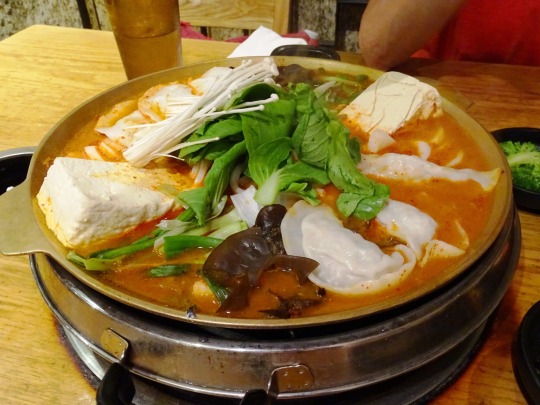

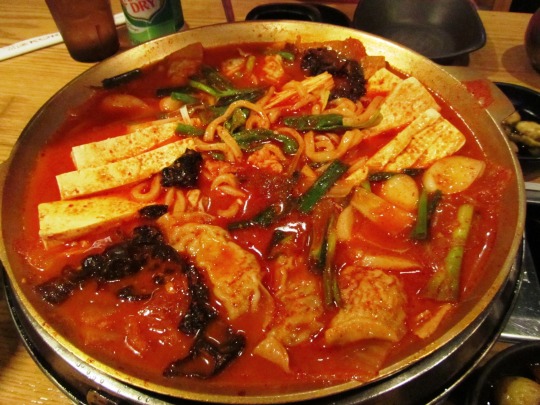
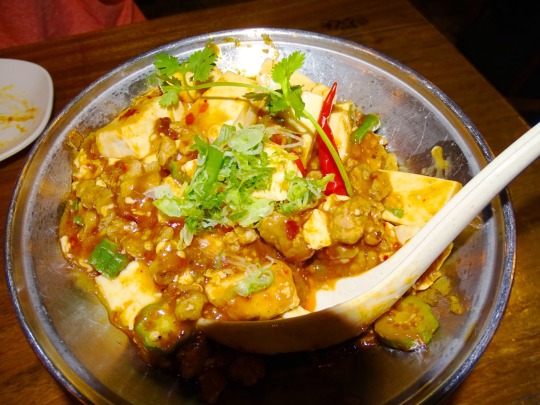
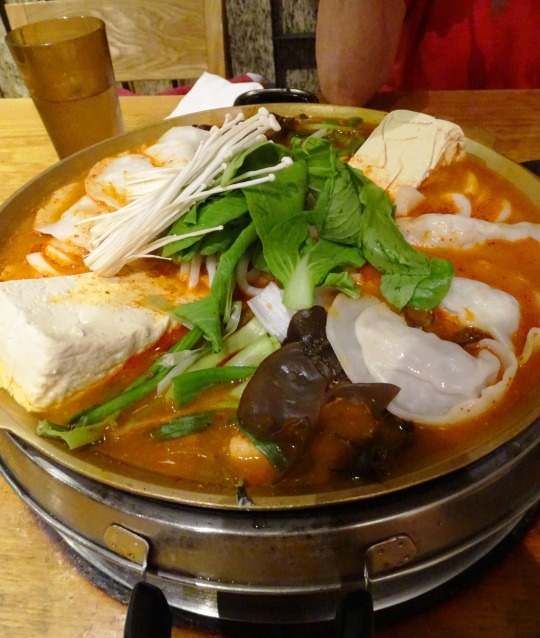
World Tofu Day
World Tofu Day is annually observed on July 26, in honor of tofu, a plant-based alternative to meat that is manufactured from soybeans. Tofu has seen a surge in popularity as more people switch to a plant-based diet. For vegans and vegetarians, it is particularly appreciated and enjoyed because they can avoid eating meat, but still get some much-needed protein from it. Even if you are not a vegetarian, but you’re curious about tofu, today is a good day to give it a try.
History of World Tofu Day
The Eastern Asian diet, which relies heavily on tofu, is a staple in many countries around the world. As important as dairy products like milk and cheese are to regular eaters, tofu is an indispensable part of every vegetarian diet. It may be newer in the West, but tofu dates back to 900 A.D. in Japan, where it is most popular.
Tofu, or bean curd in English, has several different names in the Chinese and Japanese languages. The term ‘tofu’ wasn’t coined until the 1800s when English translations of cookbooks began to appear. In the 1970s, as the meat replacement gained widespread acceptance in the West, cookbooks began to use ‘tofu’ as an official designation. People who prefer to adopt a vegetarian or vegan diet have grown to rely on tofu. It has become a classic meal and a nutritious alternative for them.
Each Japanese province has its distinct method of producing tofu, reflected in the wide range of ways it is consumed. When soybean production is executed well, it is enjoyed by a large number of people. Tofu is one of the most versatile and nutritious foods available worldwide. National Tofu Day seeks to highlight the numerous ways tofu has influenced people around the world while giving them the required nutrients.
World Tofu Day timeline
179 B.C. China Creates Tofu
During the Han Dynasty, China creates tofu as an affordable alternative for people who cannot afford meat.
8th Century A.D. The Tofu Production Technique Improves
During the Nara period, the Japanese adopt tofu and find the right technique to make them firmer and tastier.
1803 Tofu Gains Popularity in Japan
Tofu gains popularity in Japan when it becomes more widely accessible to people besides the rich.
1975 The Book of Tofu
“The Book of Tofu” is published, introducing tofu to the Western world and promoting vegetarianism and veganism.
2014 First World Tofu Day
The Society for the Protection of Animals organizes World Tofu Day as a worldwide celebration.
World Tofu Day FAQs
What is the purpose of the tofu in recipes?
Silken tofu, which is made by pureeing firm tofu to a silky paste, is used in a variety of dishes to enhance the creaminess and texture. It can also be used in place of eggs. Regular tofu, often known as bean curd or Chinese-style tofu, is much more widely available.
What's the best kind of tofu to use in a recipe?
If you’re looking for all-purpose tofu that can be sliced and cubed, extra-firm tofu should be your go-to. It can be used for pan-frying, stir-frying, baking, grilling, and scrambling.
Which method of cooking tofu is the healthiest option?
Tofu can be cooked in a steamer, which is the simplest and healthiest method. Line the steamer basket with paper or a cabbage leaf to keep the tofu from breaking apart.
World Tofu Day Activities
Make tofu dishes at home
Think outside the box
Host a gathering
Go online and search for tofu recipes to try out at home. There are several of them, including tikka masala, bibimbap, and more.
Think of tofu in a new light by introducing it into your meals. Tofu's adaptability implies that it can be cooked in a wide range of meals and will improve and enhance the flavors.
Hosting a gathering is a great way for other people to try tofu dishes. They can learn about the countries where tofu originated from too. Take it a step further by hosting a cooking competition if it’s a small gathering. The person who makes the best dish wins.
5 Interesting Facts About Tofu
Five types of tofu
Tofu in a mile
A cure for cancer?
Tofu for dessert
Color change
There are five main types of tofu: silken, extra soft, medium, firm, and extra firm.
One mile is equal to 12,672 blocks of tofu laid end-to-end.
Isoflavones, which are found in tofu, are known to lower the risk of cancer.
Tofu takes on the taste of whatever it is being cooked in, making silken tofu perfect for custards, pie, and making your chocolate cake moist.
When frozen, tofu takes on a yellowish color, but it returns to its original color once it thaws.
Why We Love World Tofu Day
It’s a healthy option
It is a versatile meal
Low-cost protein source
To make tofu, soybeans are separated into lumps and then pressed together again to form blocks. A good source of protein, tofu is low in fat and carbs. It is made up of fewer saturated fats, a good source of iron, magnesium, manganese, selenium, and calcium, as well as vitamins and minerals.
Many people believe tofu is tasteless which makes them unwilling to try it. When cooked properly and flavored with the right ingredients, tofu is very delicious. It acts like a sponge, soaking up the flavors of whatever it is cooked in. Tofu is a versatile ingredient that can be used in a variety of dishes, from salty to sweet. It can even be used to make cheese.
Tofu is surprisingly affordable and relatively easy to make from scratch. Most supermarkets, grocers, and Asian specialty shops carry tofu. It's a great ingredient for large-scale meals for a large number of people.
Source
#Spicy Okra Tofu Pork#Kimchi Mandu Jeongol Hot Pot#travel#original photography#Toronto#New York City#USA#Canada#restaurant#I don't like tofu that much#World Tofu Day#WorldTofuDay#26 July#food#vacation#summer 2018#2013
1 note
·
View note
Text

#Openwork furniture plaque with a grazing oryx in a forest of fronds#ca. 9th–8th century B.C.#metmuseum#oryx#forest#furniture
0 notes
Text

Part of a throne with deity on a bull, Urartian, ca. late 8th-7th century B.C.
Urartu was a powerful kingdom that rivaled the assyrian Empire in the first millenium B.C. It extended from northeastern Turkey into northwestern Iran. This object, with the lower part of a figure standing along the flanks of a bull, was most likely part of a throne. From better-preserved examples, we know that the figure wore the horned crown of a deity. The whole would have been gilded. A throne and footstool supported by four deities and their animal companions would have been a potent symbol of the Urartian king’s power.
Iron age III ca. late 8th-7th century B.C. Urartu, probablu from Toprakkale bronze, plastic restoration 7 7/16 x 5 7/8 x é 13/16 in. (18.9 x 15 x 7.2 cm) the MET New York
#urartian art#urartu#bull artefact#museum artefacts#archeology#ancient art#art history#witchy#occult#sacred#ancient magic#ancient kingdom
36 notes
·
View notes
Photo
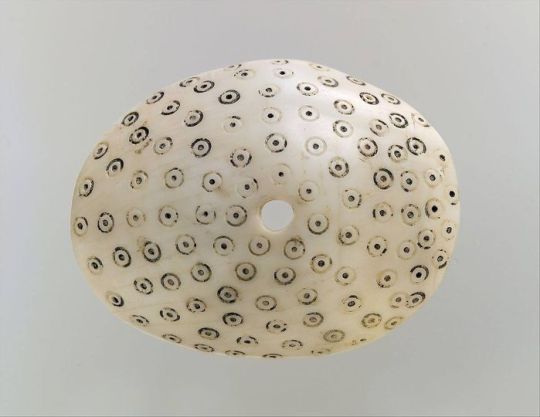
Decorative boss,ca. 8th century B.C.
This curved object, carved from a thick piece of shell and decorated with small circles and dots, was part of a group of 18 similar pieces found in a well in the Northwest Palace of Ashurnasirpal II at Nimrud. They were probably thrown into the well when the palace was sacked, in 614 B.C. and then again two years later. Their function is mysterious. All were pierced in the center and in some examples a nail remained in the central hole, which must have fastened the shell to a backing in some other material, perhaps wood. Other objects found in the same well can be identified as horse trappings, such as the small shell ornaments and studs also in the Metropolitan Museum’s collection (54.117.16-.19). These were probably part of a leather harness, which disintegrated in the well sludge. Horses in the reliefs of the palace of Sargon II at Dur Sharrukin (modern Khorsabad) are represented with similar double-fan shaped ornaments on their bridles, as in a relief in the Metropolitan Museum (33.16.1) showing a groom with two horses. This suggests that the other shell pieces found with the harness ornaments may have also been used for outfitting horses, perhaps affixed to a chariot as decoration. Because of the close parallel with the reliefs from the palace at Dur Sharrukin, the equestrian harness elements from this well probably date to the time of Sargon in the late eighth century B.C. At this time, the Northwest Palace was primarily used for storage rather than as a royal residence.
30 notes
·
View notes
Text
The Old Persian inscription of Phanagoreia

The Old Persian inscription of Phanagoreia (DFa) (Photograph after Кузнецов/Никитин 2017, p. 156, fig. 2). Source: https://www.researchgate.net/figure/The-Old-Persian-inscription-of-Phanagoria-DFa-Photograph-after-Kuznecov-Nikitin-2017_fig1_340493055
“FROM BOSPORUS … TO BOSPORUS: A NEW INTERPRETATION AND HISTORICAL CONTEXT OF THE OLD PERSIAN INSCRIPTION FROM PHANAGOREIA*
BY
Eduard RUNG 1 & Oleg GABELKO 2
(1The Department of General History, Institute of International Relations, Kazan Federal University, Kazan, Russia; 2 The Department of Ancient History, Institute for Oriental and Classical Studies, Russian State University for the Humanities, Moscow, Russia)
Abstract: The article offers a new interpretation of the fragment of an Old Persian inscription discovered during the Phanagoreia excavation in 2016. The first publishers of the document, V.D. Kuznetsov and A.B. Nikitin, concluded that Xerxes should be identified as the author of the text, and connected the appear-ance of the stone in Phanagoreia with a hypothetical military expedition by that king against the Greek poleis of the Cimmerian Bosporus, supposedly carried out before the invasion of Balkan Greece. Nevertheless, the remnants of the text in the extant lines 1 and 2 give stronger grounds for attributing the inscription to Darius I and for connecting its creation with that king’s Scythian campaign (ca 513–512 B.C.). The evidence provided by Herodotus (4. 87), Ctesias of Cnidus ( FGrHist688 F 13. 21) and Dionysius of Byzantium (52) testifies to the erection on Darius’ orders of a complex of monumental constructions in the immediate proximity of the bridge over the Thracian Bosporus, and those constructions included a cuneiform inscription that clearly had symbolic significance. On hearing rumours of the king’s failures in Europe the citizens of Byzantium and Chalcedon destroyed these monuments for the purpose of proclaiming their own liberation from Persian control and put to shame the ὕβρις that Darius had displayed – thus, as a consequence, bringing punishment upon themselves (Hdt. 5.26; Ctes. FGrHist 688 F 13. 21; Polyaen. 7. 11. 5; Dion. Byz. 14). A fragment of Darius’ inscription might have been brought to Phanagoreia as a kind of trophy, where it would have political significance because that polis was founded by citizens of Teos in Asia Minor who fled the threat of enslavement by the Persiansin 546 B.C. (Hdt. 1. 168; Strabo. 14. 1. 30) and had every reason to persist in their hatred of the Great King. It cannot, however, be ruled out that the stone found its way to the Cimmerian Bosporus as a simple piece of ship’s ballast.”
From Bosporus… to Bosporus: A New Interpretation and Historical Context of the Old Persian Inscription From Phanagoreia // Iranica Antiqua. 2019. Vol. 54. P. 83-125, 2019, Oleg Gabelko Eduard Rung
On line source with the whole text of the paper: https://www.academia.edu/42947811/FROM_BOSPORUS_TO_BOSPORUS_A_NEW_INTERPRETATION_AND_HISTORICAL_CONTEXT_OF_THE_OLD_PERSIAN_INSCRIPTION_FROM_PHANAGOREIA?email_work_card=view-paper

Oleg Gabelko

Eduard Rung

Phanagoreia and other ancient Greek colonies along the north coast of the Black Sea, 8th to 3rd century BC. Source: https://en.wikipedia.org/wiki/Phanagoria
17 notes
·
View notes
Text

~ Furniture plaque carved in high relief with two Egyptianizing figures flanking a volute tree.
Period: Neo-Assyrian
Date: ca. 9th–8th century B.C.
Place of origin: Mesopotamia, Nimrud (ancient Kalhu)
Culture: Assyrian
Medium: Ivory
#ancient#ancient art#furniture plaque#egyptianizing figures#volute tree#nimrud#mesopotamia#assyrian#neo-assyrian#kalhu#ivory#ca. 9th century b.c.#ca. 8th century b.c.#history#archeology#museum
242 notes
·
View notes
Text
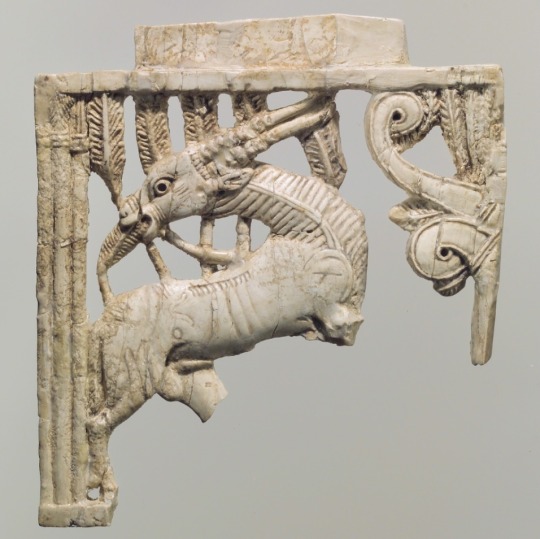
Unknown Assyrian
Openwork furniture plaque with a grazing oryx in a forest of fronds, ca. 9th–8th century B.C., Mesopotamia, Nimrud (ancient Kalhu)
Ivory
182 notes
·
View notes
Photo

Ivory horse blinker carved in relief with a seated sphinx, Assyria ca. 8th century B.C. Part of the Metropolitan Museum of Art collection.
46 notes
·
View notes
Photo

Costumed Figure
7th–8th century
Maya
Date: 7th–8th century
Geography: Mexico, Mesoamerica
Culture: Maya
Medium: Ceramic, pigment
Dimensions: H. 11 1/2 x W. 3 13/16 x D. 3 3/4 in. (29.3 x 9.7 x 9.5 cm)
This ceramic figurine depicts a standing male wearing a long textured bodysuit and conical headdress. His mouth is open, as if speaking, and he wears an ornament between his eyes. Incised lines on his cheeks may represent wrinkles, indicating he is a mature individual. He wears a belt and loincloth above the bodysuit, as well as a ruffled collar and large round earflares, or ornaments worn in the earlobes (see 1994.35.591a, b for an example of an earflare set, and 1979.206.1047 for individuals wearing earflare assemblages). His pectoral consists of a large round element with a zoomorphic face emerging from the top right corner. He carries a rectangular shield in his left hand; the shield is marked with patterns that probably represent feathers. The right arm of the figurine is broken at the elbow. This figurine is also a whistle; the mouthpiece of the whistle, visible from the sides and back, serves as a third support so that the figurine can stand erect. This figurine was made from a mold, with individual characteristics added by hand. Fingerprints, remnants of hand modeling, are visible on parts of the headdress, including the right earflare and the fringes on the left side of the individual’s face. The figurine still retains large swaths of paint, indicating the entire surface would once have been brightly colored. Aside from a central vertical strip, the individual’s face is blue. The textured bodysuit is also blue. The pigment on these sections of the figurine is probably “Maya blue,” a distinctive and durable paint made by heating indigo and palygorskite, a mineral found in clay (see Crocodile Rattle, 1979.206.1143, for another example of Maya blue). The section around the individual’s shoulders is slightly faded and less textured than other parts of the figurine, indicating use wear. The individual’s loincloth and the center of his face were painted red. White paint remains on his pectoral, and on the circular elements atop his feet. The figurine is resolutely frontal: the back of the whistle lacks modeling and texture, and its smooth surface is painted red on the bottom and blue on top. This figurine is in the Jaina style, named after a small island off the coast of Campeche, Mexico. Jaina was a Maya center occupied from the Late Preclassic period (ca. 300 B.C.–A.D. 250) to the Late Postclassic period (ca. 1200–1500), with a peak population in the Late Classic (ca. A.D. 600–800) and Terminal Classic (ca. A.D. 800–900) periods. A large number of figurines and anthropomorphic whistles similar to this one have been recovered from the island. Like this example, figurines from Jaina are mold made, with individual details added by hand. They depict a variety of subjects, from seated young women to warriors to anthropomorphic beings. While many of these artifacts lack archaeological context, excavations have recovered figurines in the burials of adults and infants. Although this style of figurine is closely associated with Jaina Island, source testing of ceramic material in other museum collections indicates that Jaina-style figurines may have been produced and traded throughout Veracruz, Tabasco, Campeche, and Chiapas, Mexico. Jaina-style figurines seem to represent ideal “types” of people rather than individual portraits. The portliness of this figure, combined with his heavy jowls and protruding belly, suggest ties with the “Fat God,” a poorly understood character who appears throughout ancient Mesoamerican belief systems. Because his status as a deity is unclear, some scholars, such as archaeologist Christina Halperin, refer to him as the “Fat Man.” First appearing in art from the Preclassic period, the “Fat Man” is a common figurine subject, characterized by his corpulent stomach, sagging jowls, and closed, puffy eyes. The “Fat Man” is associated with humor and musical performance, and in the Classic period he may have been a ritual clown, much like the court jester in Medieval Europe. In some examples he wears a textured bodysuit, dances, and holds a fan. He also appears, as in this figurine, as a warrior with a shield. Christina Halperin (2014) suggests that depictions of the “Fat Man” as a warrior may have been ironic or humorous because they combine the accoutrements of a warrior with someone who is clearly not in fighting shape. The many incarnations of the “Fat Man” suggest that his meaning may have varied across time and space, however, and that not all portly individuals in Maya art represent this character. Other Jaina-style figurines suggest a more generic designation as a noble or warrior. A similar work in the Cleveland Museum of Art (1963.93) wears a textured blue bodysuit and a removable helmet, and the position of his hands suggests he once carried a spear and shield. Like the Metropolitan figurine, he also has a potbelly. Another figurine in the Jaina style, photographed by Justin Kerr (K1503 in his Pre-Columbian Portfolio), carries a shield with rectangular bands of feathers almost identical to those on the shield of the Metropolitan figurine. In addition, the Metropolitan figurine may represent a local warrior “type” who appears in the art of the Northern Lowlands, especially at Oxkintok and Dscelina. At these sites in Campeche, Mexico, large relief columns depict similar rotund individuals wearing textured bodysuits and carrying shields. The bodysuit most likely represents the quilted armor worn by warriors, while the rectangular shield is carried by warriors in the Usumacinta area. Whether warrior or “Fat Man,” the rich accoutrements worn by this figure underline his noble status.
101 notes
·
View notes
Photo

Shell Engraved with Winged Female Deity, Sphinxes and Lotus Plants Period- Iron Age I Date- ca. 8th–7th century B.C. Geography- Levant
564 notes
·
View notes
Text





World Tofu Day
World Tofu Day is annually observed on July 26, in honor of tofu, a plant-based alternative to meat that is manufactured from soybeans. Tofu has seen a surge in popularity as more people switch to a plant-based diet. For vegans and vegetarians, it is particularly appreciated and enjoyed because they can avoid eating meat, but still get some much-needed protein from it. Even if you are not a vegetarian, but you’re curious about tofu, today is a good day to give it a try.
History of World Tofu Day
The Eastern Asian diet, which relies heavily on tofu, is a staple in many countries around the world. As important as dairy products like milk and cheese are to regular eaters, tofu is an indispensable part of every vegetarian diet. It may be newer in the West, but tofu dates back to 900 A.D. in Japan, where it is most popular.
Tofu, or bean curd in English, has several different names in the Chinese and Japanese languages. The term ‘tofu’ wasn’t coined until the 1800s when English translations of cookbooks began to appear. In the 1970s, as the meat replacement gained widespread acceptance in the West, cookbooks began to use ‘tofu’ as an official designation. People who prefer to adopt a vegetarian or vegan diet have grown to rely on tofu. It has become a classic meal and a nutritious alternative for them.
Each Japanese province has its distinct method of producing tofu, reflected in the wide range of ways it is consumed. When soybean production is executed well, it is enjoyed by a large number of people. Tofu is one of the most versatile and nutritious foods available worldwide. National Tofu Day seeks to highlight the numerous ways tofu has influenced people around the world while giving them the required nutrients.
World Tofu Day timeline
179 B.C. China Creates Tofu
During the Han Dynasty, China creates tofu as an affordable alternative for people who cannot afford meat.
8th Century A.D. The Tofu Production Technique Improves
During the Nara period, the Japanese adopt tofu and find the right technique to make them firmer and tastier.
1803 Tofu Gains Popularity in Japan
Tofu gains popularity in Japan when it becomes more widely accessible to people besides the rich.
1975 The Book of Tofu
“The Book of Tofu” is published, introducing tofu to the Western world and promoting vegetarianism and veganism.
2014 First World Tofu Day
The Society for the Protection of Animals organizes World Tofu Day as a worldwide celebration.
World Tofu Day FAQs
What is the purpose of the tofu in recipes?
Silken tofu, which is made by pureeing firm tofu to a silky paste, is used in a variety of dishes to enhance the creaminess and texture. It can also be used in place of eggs. Regular tofu, often known as bean curd or Chinese-style tofu, is much more widely available.
What's the best kind of tofu to use in a recipe?
If you’re looking for all-purpose tofu that can be sliced and cubed, extra-firm tofu should be your go-to. It can be used for pan-frying, stir-frying, baking, grilling, and scrambling.
Which method of cooking tofu is the healthiest option?
Tofu can be cooked in a steamer, which is the simplest and healthiest method. Line the steamer basket with paper or a cabbage leaf to keep the tofu from breaking apart.
World Tofu Day Activities
Make tofu dishes at home
Think outside the box
Host a gathering
Go online and search for tofu recipes to try out at home. There are several of them, including tikka masala, bibimbap, and more.
Think of tofu in a new light by introducing it into your meals. Tofu's adaptability implies that it can be cooked in a wide range of meals and will improve and enhance the flavors.
Hosting a gathering is a great way for other people to try tofu dishes. They can learn about the countries where tofu originated from too. Take it a step further by hosting a cooking competition if it’s a small gathering. The person who makes the best dish wins.
5 Interesting Facts About Tofu
Five types of tofu
Tofu in a mile
A cure for cancer?
Tofu for dessert
Color change
There are five main types of tofu: silken, extra soft, medium, firm, and extra firm.
One mile is equal to 12,672 blocks of tofu laid end-to-end.
Isoflavones, which are found in tofu, are known to lower the risk of cancer.
Tofu takes on the taste of whatever it is being cooked in, making silken tofu perfect for custards, pie, and making your chocolate cake moist.
When frozen, tofu takes on a yellowish color, but it returns to its original color once it thaws.
Why We Love World Tofu Day
It’s a healthy option
It is a versatile meal
Low-cost protein source
To make tofu, soybeans are separated into lumps and then pressed together again to form blocks. A good source of protein, tofu is low in fat and carbs. It is made up of fewer saturated fats, a good source of iron, magnesium, manganese, selenium, and calcium, as well as vitamins and minerals.
Many people believe tofu is tasteless which makes them unwilling to try it. When cooked properly and flavored with the right ingredients, tofu is very delicious. It acts like a sponge, soaking up the flavors of whatever it is cooked in. Tofu is a versatile ingredient that can be used in a variety of dishes, from salty to sweet. It can even be used to make cheese.
Tofu is surprisingly affordable and relatively easy to make from scratch. Most supermarkets, grocers, and Asian specialty shops carry tofu. It's a great ingredient for large-scale meals for a large number of people.
Source
#Spicy Okra Tofu Pork#Kimchi Mandu Jeongol Hot Pot#travel#original photography#Toronto#New York City#USA#Canada#restaurant#I don't like tofu that much#World Tofu Day#WorldTofuDay#26 July#food#vacation#summer 2018#2013
0 notes